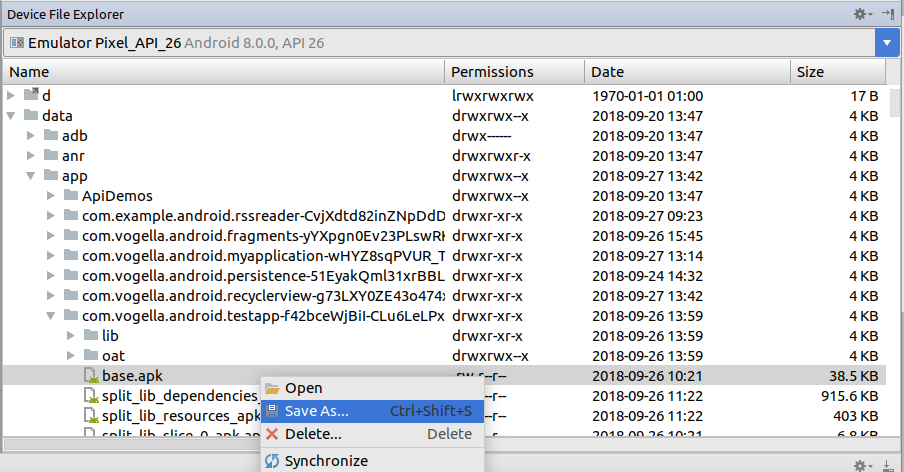

- ANDROID STUDIO 2.2.3 ATTACH FILE TO UPLOAD HOW TO
- ANDROID STUDIO 2.2.3 ATTACH FILE TO UPLOAD INSTALL
- ANDROID STUDIO 2.2.3 ATTACH FILE TO UPLOAD ZIP FILE
- ANDROID STUDIO 2.2.3 ATTACH FILE TO UPLOAD MANUAL
- ANDROID STUDIO 2.2.3 ATTACH FILE TO UPLOAD FOR ANDROID
This is because, the buildscript is the entry point into this file when the project is being built. We placed this variable in the buildscript closure.You can check out this post about externalizing your dependencies versions using gradle extra properties for more info. The reason we have this is we may have other places in the project where we need to reference the Kotlin version, so it makes sense to “externalize” that value. We created a variable ext.kotlin_version.

The project adle file looks like this:īuildscript Add the plugin to the dependencies closure in the project adle file. To configure the plugin, we first need to add the plugin to the root project’s adle, same way it’s done for the Gradle plugin (automatically).
ANDROID STUDIO 2.2.3 ATTACH FILE TO UPLOAD MANUAL
There is an automated tool to do this but sometimes, the tool messes things up, so let’s just walk through the manual process of applying the plugin in our adle files (both at the project level and the app-module level). Next step is to apply the Kotlin plugin to the project. Select the “Create Empty Activity” option at the end.įor more information on creating an Android project, check out this guide. Navigate to File > New > New Project and follow through project creation wizard. Now that we have the plugin installed, let’s go ahead and create a new Android project - the usual way we would. Just in case you’re using IntelliJ IDEA 15 or above, you’re in luck - Koltin plugin ships with the IDE.
ANDROID STUDIO 2.2.3 ATTACH FILE TO UPLOAD INSTALL
When the install is complete, you will need to restart Android Studio to apply the new plugin. To do this, navigate to Preferences > Plugins > Browse Repositories and search for “Kotlin” then, click on “Install” as shown in the figure below. First, we’re going to go ahead and install the plugin. The good people at JetBrains have created an IntelliJ/Android Studio Plugin for Kotlin.
ANDROID STUDIO 2.2.3 ATTACH FILE TO UPLOAD FOR ANDROID
Let’s get started! Install Kotlin Plugin for Android Studio
ANDROID STUDIO 2.2.3 ATTACH FILE TO UPLOAD HOW TO
In this post however, we will learn how to set up Android Studio for Kotlin development and will write our “Hello World” app in Kotlin. There are tons of articles that talk about the advantages of Kotlin in comparison to Java, so I won’t be covering that in this post. Kotlin is statically typed, it runs on the JVM and offers a lot of benefits. Kotlin is a new programming language developed by JetBrains - the makers of IntelliJ IDE which the Android Studio is based on. Copy both folders into the “src” folder (source) of your app.If you have been following the latest trends in the AndroidDev world, you are likely to have heard about Kotlin. Open the folder where you unpacked the Android SDK. Android Studio) and set up a new Android project.ĩ. ZIP file, saving it somewhere on your hard disk.Ĩ.
ANDROID STUDIO 2.2.3 ATTACH FILE TO UPLOAD ZIP FILE
ZIP file that contains all classes and resources you need. Download the Android SDK and you will download a. This will take you to an overview of the ApiOmat SDKs, which you can download by clicking "DOWNLOAD SDK".ħ. Click on the SDK tab on the menu at the top of the screen. Now we have to deploy our backend, to do this, click on the slider next to "INACTIVE".Ħ. In the field "Facebook Scope", add “publish_actions”, this will, among other things, allow you to post on your wall. Here you can enter your Facebook App ID and secret password, but you can leave those blank for now.

Scroll down and select the Facebook Module and click "+" to add the module.Ĥ.After clicking the plus, ApiOmat will ask you to configure your Facebook Module. You start on the Module Market with all the available modules you can add to your app. For your app, however, you should use a unique name.ģ. In our example the app is called “Facebook”. If you haven‘t created an app yet, you will be asked to give your first app a name and to give a short description.


 0 kommentar(er)
0 kommentar(er)
